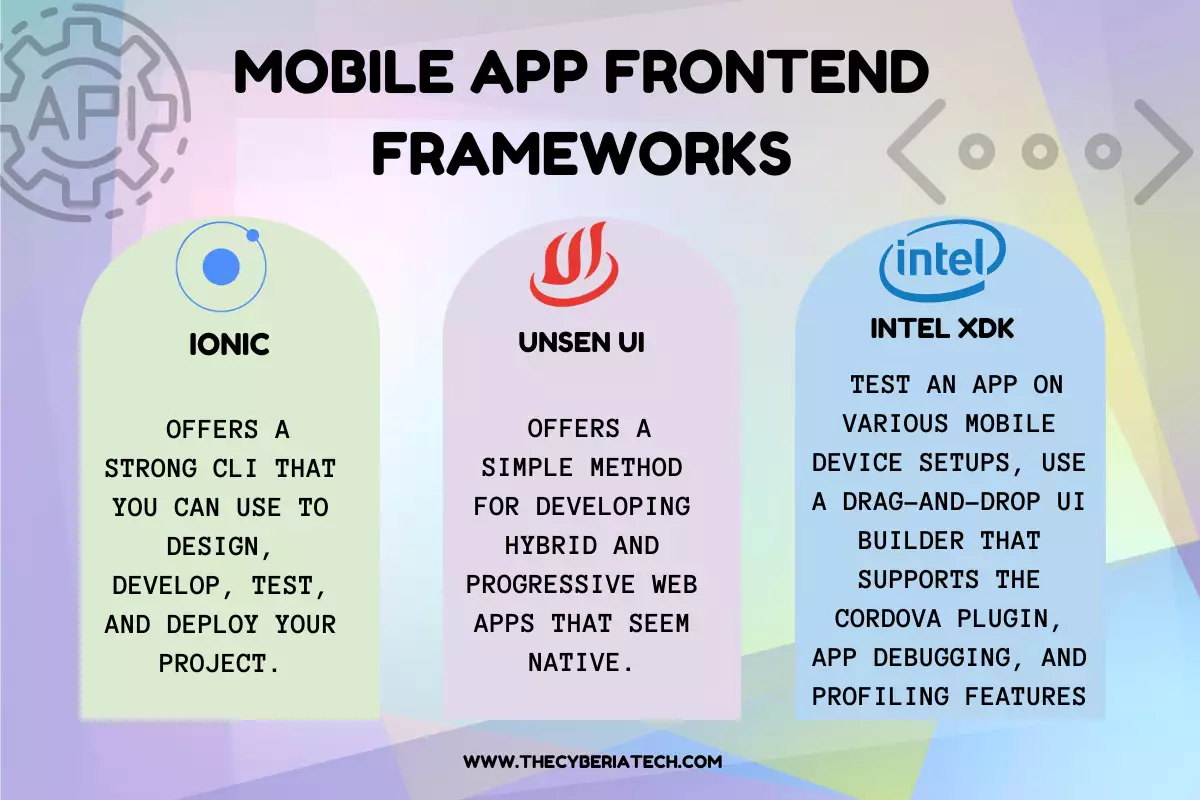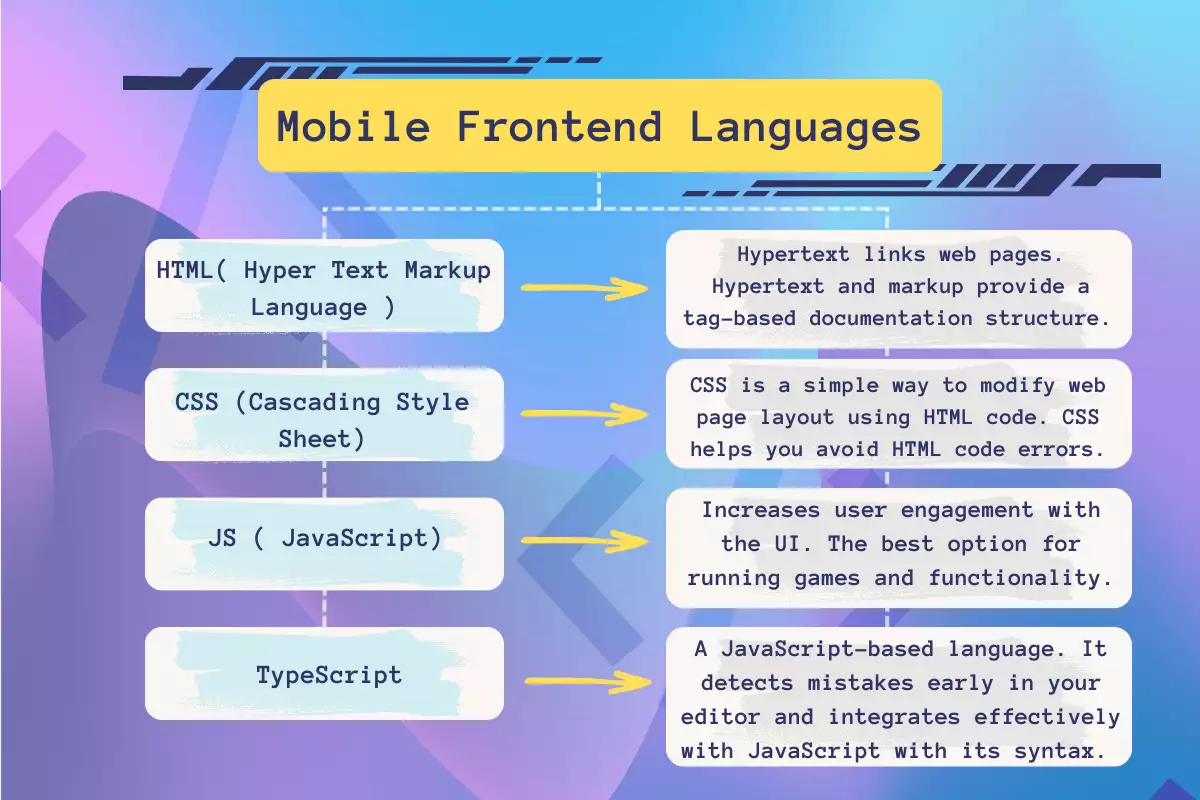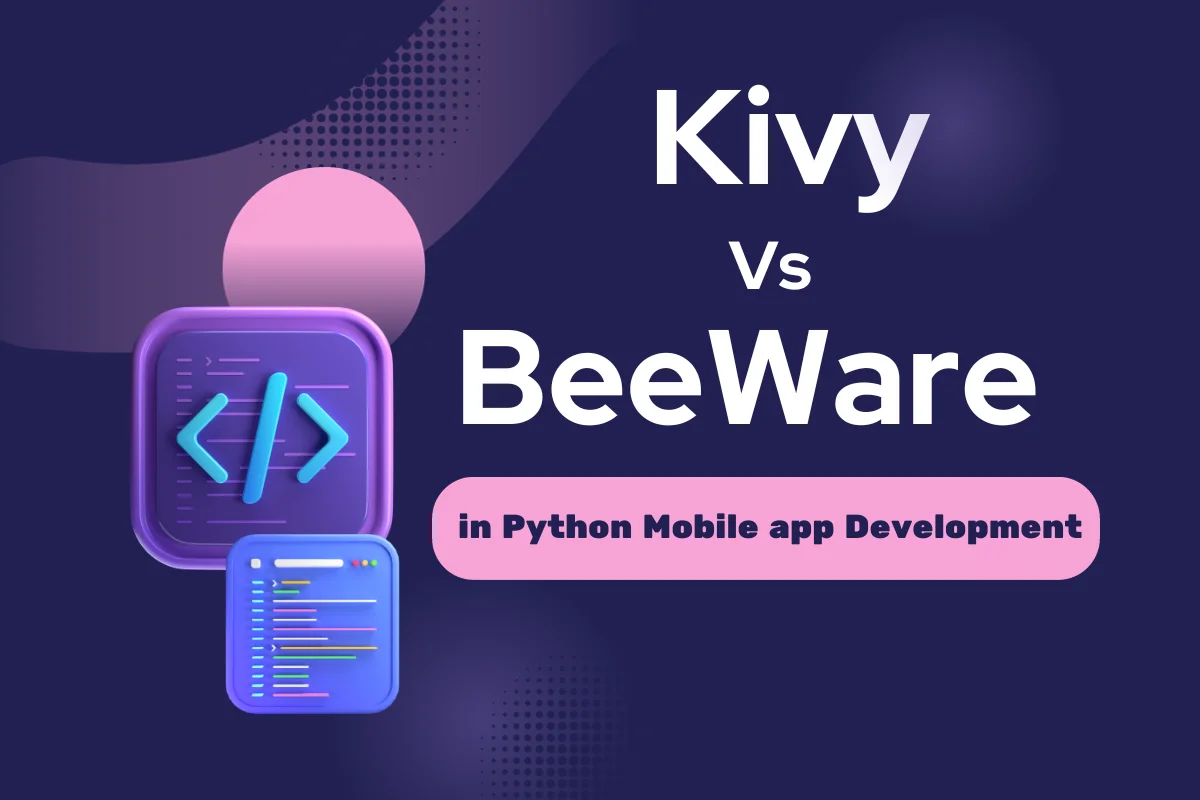Take a 360-degree look around you. Discussing mobile front end development is like looking around you.
You observe events. They are foundational, flawless, and organised. Therefore, everything which is related to front end mobile app development, from the design, colours, and fonts are relatively connected with what you see with your eyes.
Undoubtedly, the matter of frontend and design with the backend processes are connected closely to provide us with a seamless user experience.
Here is a guideline to determine why mobile app front end development is significant in the world of software development.
What a developer of the front end mobile app development can do?
The client-side or the front end is everything that the user sees. Such as text color, photos, styles, graphs, tables, buttons, and navigation menu.
The front end in mobile application development is a key to working properly and being compatible with all device sizes, even in game app development too.
As it was mentioned, the backend and front end are inseparable factors since the data like images and texts, are stored in the backend and will display on the front end.
The technology used in the front end is based on codes and languages. Any front end developer is familiar with the front end markup and stylesheets such as HTML, CSS, or JavaScript language.
Besides, there are frameworks that help the front developer organizes all of the written codes and helpful files in one place.
Why? Simply, to bring you a smooth and enjoyable experience in any type of app development whether is native, cross-platform or hybrid). You will see the framework types in the following article.
Thus the front-end developer is responsible for the vision and design concepts and implements them through the code.

Mobile application development is the foundation of the apps you download from Google Play or the app store. The main advancements in mobile technology, whether native, cross-platform, or even hybrid, are linked to front end mobile app development to share the greatest user experience.
The primary area of an online website or mobile application that users interact with is the front end. The key topics of this section of app development are the structure, design, behavior, and content that will be displayed on mobile apps, websites, and virtual reality apps .
"When we don’t want to use separate coding for iOS or Android we have react as a cross-platform."
How many frameworks does mobile front end development have?
Undoubtedly, this specific development process is speechless without a framework. Framework is like a translator. You give your specific code spells as CSS, HTML, and JavaScript and the magic graphical interface happens. Let’s become familiar with some of them.
- Angular this modern framework is entirely built in TypeScrip, an affordable framework to build a web application that will run on any device. Also, you can mix Angular with a NativeScript framework to build an app on both iOS and Android.
- Vue.JS is known as the most straightforward and all-purpose framework, a cross-platform one. Come in handy in app development to help you make your Android and iOS app.
- Emberjs focuses on high performance, stability, and data management. Besides, it gives offers on many tools to avoid outdated APIs.
Moreover, React Native is one of the best frameworks for those who want to have safe and stable platform management as well as high traffic.
It is also called React JS, which is used for websites. ReactNative is an overly used and trusted framework that has its roots in React and it is popular among app developers.
When we don’t want to use separate coding for iOS or Android, we have React Native as a cross-platform framework. If you consider using a native app development you can read more about Swift app development in another article.
What option these frameworks provide for mobile app front end development?
- Ionic: As the leading tool, keep apps dynamic and functional in hybrid mobile app development.
- Unsen UI: an open-source framework to pick and choose the feature and apply it in the mobile app. And to give a user-friendly, responsive interface.
- Intel XDK: Provides the developer several chances to test and debug the app before the official publishing. It also creates a space to provide cross platform app development.
That’s why we can say that mobile frontend development is the speaker of your app. Think wisely and make the right decision.
You can read more about mobile app design in the other article to realize the importance of user-friendliness.
What options do these frameworks provide for mobile app front end development?
These frameworks provide mobile app front-end development options for a variety of developers. Ionic’s open-source UI toolkit supports several JavaScript frameworks and provides a fast, adaptable UI for all app platforms. Unsen UI is framework-agnostic and prioritises mobile device performance. Intel XDK supports iOS, Android OS, Blackberry, and Tizen, making it a robust cross-platform development tool. Let’s read more about them:

A. Ionic:
One of the open-source UI toolkits made especially for creating cutting-edge, cross-platform mobile apps is called Ionic. Performance is the key feature, designed to be quick by default. Other features include a configurable user interface (UI) for all app platforms, support for JS frameworks, and the option of using a bright or dark UI style for improved usability. Additionally, it has improved editor tooling to do typical operations with efficiency and best practices. The On-device Hot Refresh option will expedite the development process so that you can see the changes as soon as you make them.
B. Unsen UI:
It’s notable for being framework-agnostic, allowing the developer to create an application whether or not they choose to use a JS framework. Other binding packages like React, Vue, AngularJS1, and Angular 2+ are also included. This framework was built primarily for mobile device performance optimisation. One of those effective frameworks for creating mobile web applications.
C. Intel XDK
Another cross-platform mobile app framework is Intel XDK. Almost all platforms, including iOS, Android OS, Blackberry, and Tizen, are compatible. . The other benefit of adopting this framework is the code generator and demo applications.
How many languages mobile front end development can have?
The popular front-end language is JavaScript, as you have already read. But let’s get started and quickly see what each of them has. Remember, HTML and CSS are not programming languages. Here are the top 6:

Each of these mentioned languages has its own benefits so that you can use them based on the usability of your app. Actually, in front-end mobile app development languages are like spells, they make the magic graphical interface happen.
So, we can say that the front end has a crucial mission on both sides of design and backend development. Just like Amazon, a mobile e-commerce app.
The better the front end, the less confusing the app is, and users are much happier with their purchases. Remember how vital backend language is to ensure the app won’t crash.
You can read other extra information about front-end languages for mobile apps in the other article.
The Crucial Role Of JavaScript Strings In Mobile Front End Development
In the realm of mobile front end development, JavaScript strings are a fundamental component for handling and manipulating text-based data.
They enable developers to dynamically generate and modify content, validate user inputs, perform string concatenation, and implement text formatting functionalities.
JavaScript strings play a vital role in creating engaging and interactive user interfaces in mobile applications.
By leveraging the power of JavaScript string manipulation techniques, developers can enhance the user experience, ensure data integrity, and provide seamless interactions.
Mobile front end development heavily relies on JavaScript strings to manage and present textual information, making them an indispensable tool for crafting compelling mobile interfaces.
Other tools that may help the mobile front end development
Did you hear about Android Studio, visual studio code, and Microsoft visual studio? As we know the main goal of front end is to make a better experience from what you see in the app.
By using Android Studio, developers have built-in support for Google cloud platform. Strengthen the environment to develop for all android devices, and have a flexible grade-based build system. It is a managing tool in a single directory to build your project and create a folder in the workspace.
Microsoft Visual Studio writes and edits codes. It is a debugger, builds, and supports many aspects of software development for publishing the app. you can view, navigate, and manage your code files. See more about it on Microsoft docs.
What about Visual Studio Code? Well, it gives you the option of a quick editing process, running, and controlling version, and other basic operations. Complex workflows with full features are the duties of Microsoft visual studio.
You may think about these questions
The mobile developer is a full-stack developer, capable of working on both client and server sides. Yes, in most cases. Let’s pretend the programmer’s job is limited to the app’s user interface.
What we see in the app has everything to do with the front-end. The visual aspect of using the app is that you touch on the buttons. However, for the front and back ends to work together flawlessly, the result will be an exceptional user experience.
We can’t tell which is more difficult, however the front end is a bit tough due to the alternatives available and the need of providing a good user experience for the app.
The compensation for mobile app developers are undeniably higher. The average salary for a web developer is $53,036, whereas the average salary for a mobile developer is $71,072.
Coding is required for every step of mobile development, from the backend to the frontend. To create the front end, a developer needs expertise in markup languages such as HTML, CSS, and JavaScript.
Count down loud to build…
Keep in mind that when we discuss mobile front end development, we are referring to the front line. Rather than this part backend is ultimately works toward for the same goal.
Definitely, front end mobile app development will give you everything you as a user want to experience. A place where your main challenge is to present what you really have in your mobile app pocket.
The following article gives brief information about what this part is and how many components are needed to develop this part. Our team is always ready to grant you a voice for expanding your business during the creation of mobile app front end development by offering you the advisable services.
Keep calm, stay connected, share your comments, and subscribe to receive timely updates if you like to know more.








2 Responses
Mobile app frontend development is a critical aspect of creating a successful application. Developers focus on core principles like responsiveness, intuitive navigation, consistent branding, and performance optimization to ensure a seamless user experience. By prioritizing these design considerations, they can create visually appealing and user-friendly interfaces that enhance engagement and contribute to the overall success of the mobile app.
The goal of front-end development for mobile apps is to provide a fluid and aesthetically pleasing user experience. Core concepts, including responsiveness, intuitive navigation, consistent branding, and performance optimisation, are given top priority by developers. They build user-friendly interfaces that increase engagement and contribute to the overall success of the mobile app by concentrating on these design factors.